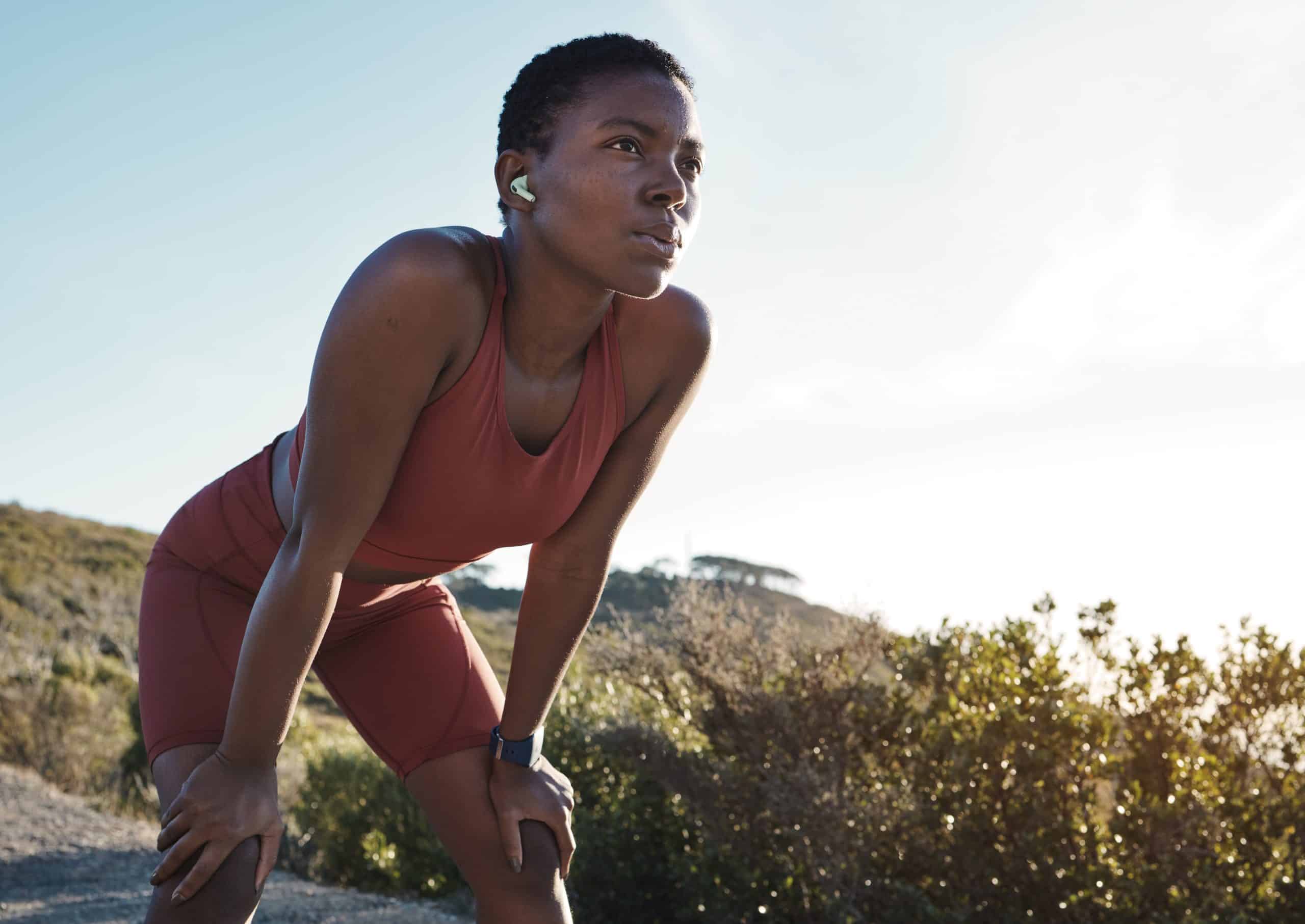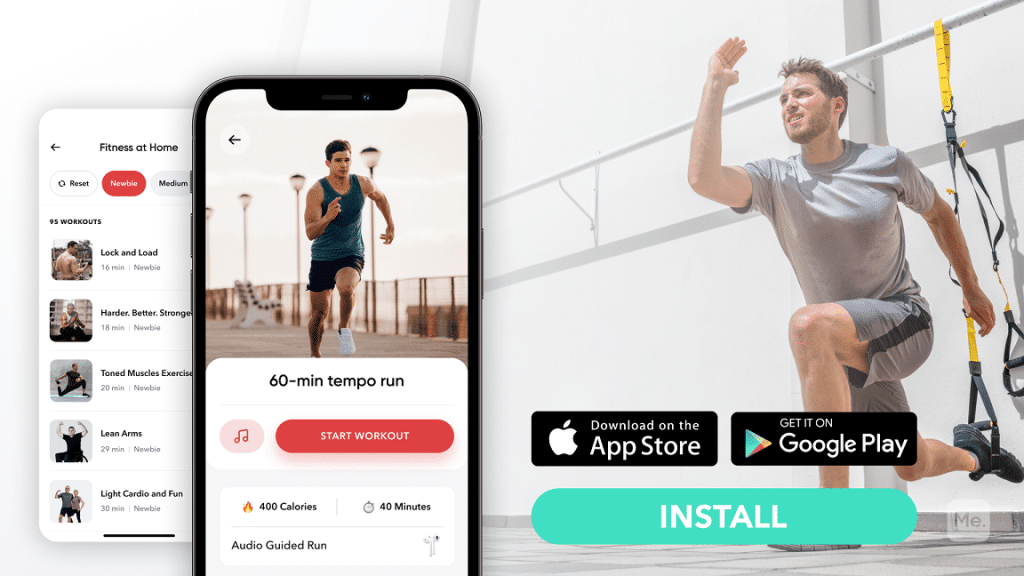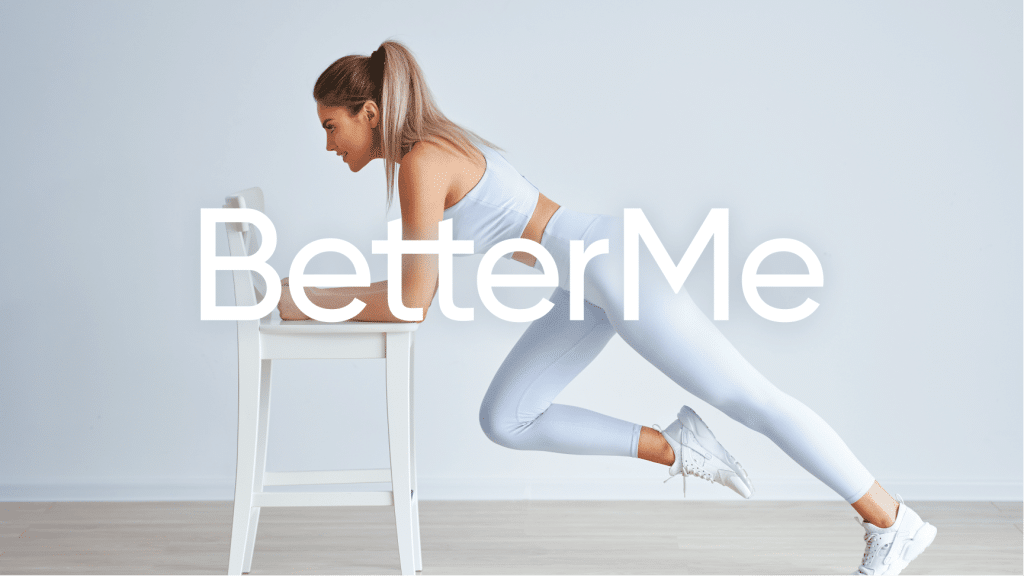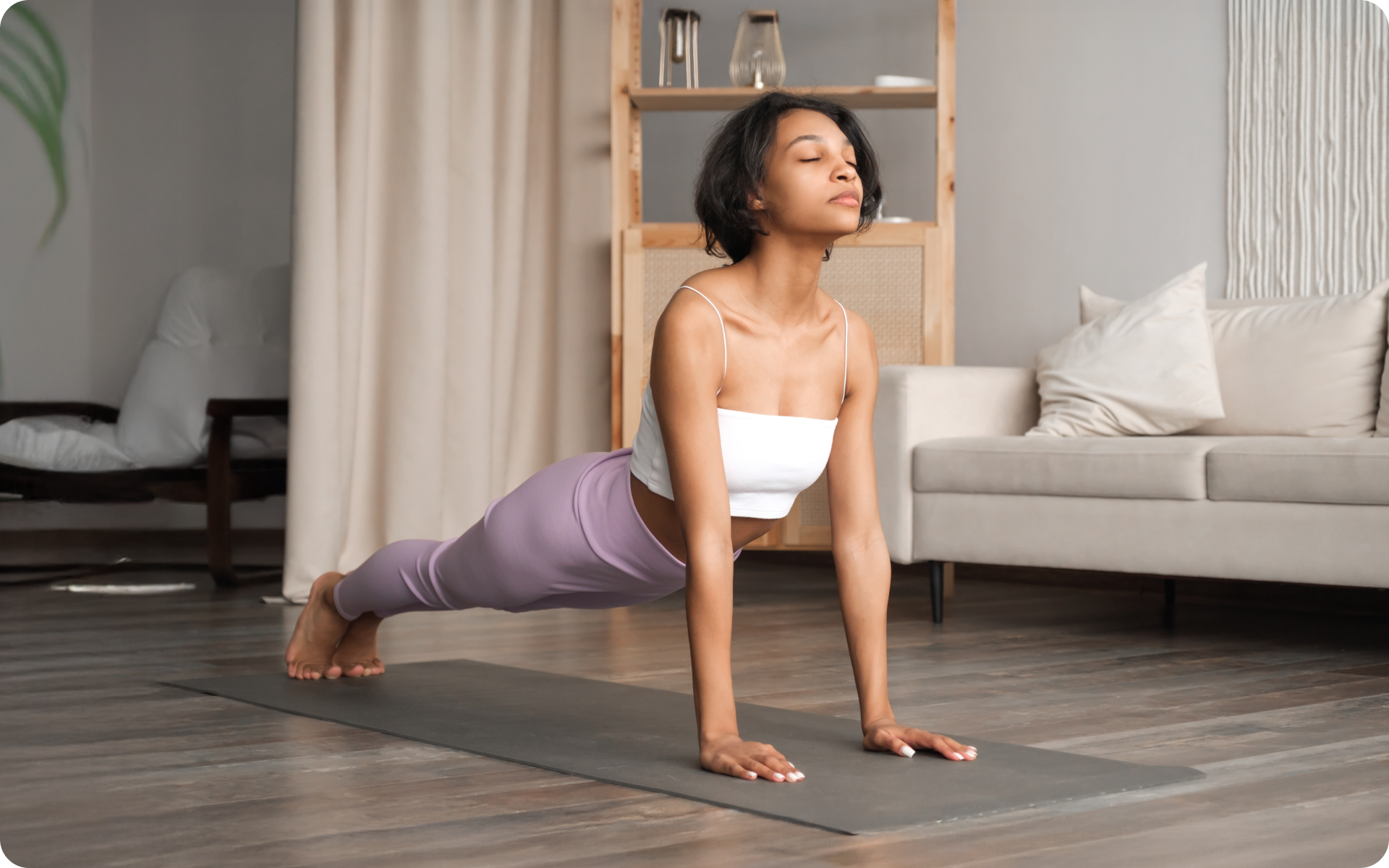It’s a common challenge faced by many runners: the struggle to increase both speed and endurance. As you embark on your running journey, you may find yourself hitting a plateau or feeling frustrated with your progress. Fortunately, there’s a wealth of knowledge rooted in scientific research and expert insights that can help you overcome these obstacles. In this blog post we’ll delve into the mechanics of running and explore tips on how to run faster and longer. With the right approach, you’ll be well on your way to achieving improved performance and unlocking your full potential as a runner.
Get your personalized
meal plan!
What Determines How Long And Fast You Run?
There are several factors that determine how long and fast you can run, which can be grouped into physiological, biomechanical, and psychological components. By understanding these factors, you can optimize your training to improve your running performance.
Physiological Factors
These refer to the internal bodily processes and systems that influence an individual’s ability to perform physical activities, such as running. Physiological factors include aspects like aerobic capacity, lactate threshold, muscle strength, and body composition, all of which play a crucial role in determining a runner’s speed and endurance.
- Aerobic Capacity (VO2 max): This refers to the maximum amount of oxygen your body can utilize during exercise. A higher VO2 max indicates better cardiovascular fitness, allowing you to run faster and longer (1).
- Lactate Threshold: This is the point at which lactic acid begins to accumulate in your muscles faster than your body can eliminate it. Training to increase your lactate threshold can help delay muscle fatigue and improve endurance (3).
- Muscle Strength and Power: Stronger muscles generate more force, which translates to improved speed. Additionally, increased muscle power allows for quicker acceleration and greater efficiency in maintaining pace (7).
- Body Composition: A leaner body composition can lead to better running economy, as carrying less weight reduces the energy required to run at a given pace (4).
Read More: Running Rules to Beat the Fatigue and Make Your Runs More Fun
Biomechanical Factors
These involve the mechanical principles and physical laws governing the movement patterns, posture, and technique of a runner. Biomechanical factors, such as running economy, stride length and frequency, and foot strike, affect the efficiency and effectiveness of an individual’s running performance, ultimately influencing their speed and endurance capabilities.
- Running Economy: This refers to how efficiently your body uses energy while running. Enhancing your running economy enables you to run longer and faster with less effort.
- Stride Length and Frequency: Stride length is the distance covered with each step, while stride frequency is the number of steps taken per minute. Balancing these two factors can help optimize your running speed.
- Foot Strike: The way your foot lands on the ground – whether it’s a forefoot, midfoot, or heel strike – can affect your running efficiency and injury risk.
Psychological Factors
These encompass the mental and emotional aspects that contribute to a runner’s performance. Psychological factors, including motivation, mental toughness, and confidence, can significantly impact a runner’s ability to push through challenges, maintain focus, and achieve their desired speed and endurance outcomes.
- Motivation: Setting realistic goals and staying committed to your training plan will boost your motivation and enhance your running performance over time.
- Mental Toughness: Developing mental strength helps you push through physical discomfort and maintain focus during challenging runs.
- Confidence: Believing in your abilities can improve your running performance, as self-confidence often translates to better pacing and decision-making during a race or training session.
If you wish to free yourself from all the extra pounds that have been weighting you down for way too long, start using the BetterMe app and overhaul your entire life!
How To Run Faster And Longer Without Getting Tired?
Running faster and longer requires a comprehensive approach, targeting various aspects of your training and lifestyle. From incorporating specific exercises that build strength and power to diversifying your workouts for enhanced physiological adaptation, to fueling your body with the right nutrition, every element plays a crucial role in optimizing your running performance.
Below are some of the main strategies to help improve your speed and endurance:
Exercises To Run Faster And Longer
Incorporating specific exercises into your training routine can help improve the physiological and biomechanical factors that contribute to running speed and endurance (8).
Strength Training
- Squats: Improve leg strength and power, contributing to better stride length and frequency.
- Lunges: Enhance hip flexor strength and stability, supporting proper running form.
- Deadlifts: Strengthen the posterior chain, promoting efficient force generation during each stride.
Plyometrics
- Box Jumps: Increase explosive power in your legs, leading to faster acceleration and improved running economy.
- Bounding: Improve stride length by developing hip extension and leg power.
- Skipping: Enhance coordination and balance, contributing to better overall running efficiency.
Workouts To Run Faster And Longer
Incorporating a variety of workouts into your training plan can target different aspects of your running performance, addressing both physiological and psychological factors (2).
Interval Training
- Short Intervals: Improve VO2 max, lactate threshold, and muscle strength for increased speed.
- Long Intervals: Enhance aerobic capacity and mental toughness, contributing to improved endurance.
Tempo Runs
- Steady-State Tempo Runs: Train your body to maintain a faster pace over longer distances, increasing your lactate threshold and running economy.
- Progression Tempo Runs: Develop pacing strategies and mental focus, boosting overall running performance.
Long Runs
- Slow, Steady Long Runs: Build aerobic endurance and mental resilience, preparing you for extended periods of running at a comfortable pace.
- Fast-Finish Long Runs: Improve your ability to push through fatigue and maintain speed during the latter stages of a race or workout.
Read More: Breathing Techniques For Running: Make Your Runs More Fun!
Food To Run Faster And Longer
Proper nutrition supports the physiological aspects of running performance, providing the necessary energy and nutrients for optimal training and recovery (9).
Carbohydrates
- Whole Grains: Provide a steady source of energy for long runs and high-intensity workouts.
- Fruits and Vegetables: Offer quick energy and essential vitamins and minerals for overall health and recovery.
Protein
- Lean Meats: Supply the amino acids necessary for muscle repair and growth, supporting strength development.
- Plant-Based Proteins: Offer alternative protein sources for vegetarian and vegan athletes, promoting muscle recovery and overall health.
Healthy Fats
- Avocado: Provides monounsaturated fats for long-lasting energy and improved nutrient absorption.
- Nuts and Seeds: Deliver essential fatty acids for optimal brain function, inflammation control, and heart health.
Proper Running Technique
Improving your running form can enhance biomechanical efficiency, reducing the risk of injury and enabling you to run faster and longer (10).
Posture
- Upright Torso: Maintain a straight back with a slight forward lean from the ankles, keeping your core engaged for stability.
- Relaxed Shoulders: Avoid hunching or tensing your shoulders, allowing for unrestricted arm movement and easier breathing.
Arm Swing
- Bent Elbows: Keep your elbows bent at a 90-degree angle, promoting efficient arm movement and reduced energy expenditure.
- Forward and Backward Motion: Swing your arms in a straight line, avoiding side-to-side motion, to maintain proper balance and alignment.
Foot Strike And Cadence
- Midfoot Strike: Aim for a midfoot landing to reduce impact forces and support a more efficient stride.
- Quick Cadence: Increase your stride frequency to around 180 steps per minute, minimizing ground contact time and promoting better running economy.
Yanking yourself back in shape has never been so easy with our game-changing fitness app! Start transforming your life with BetterMe!
Cross-Training Activities
Incorporating cross-training activities into your routine can improve overall fitness, reducing the risk of injury and addressing physiological factors that contribute to running performance (11).
Swimming
- Aerobic Endurance: Enhance cardiovascular fitness without the impact of running, supporting overall stamina.
- Muscle Balance: Strengthen underused muscle groups and maintain flexibility, preventing muscle imbalances and injury.
Cycling
- Leg Strength: Develop leg muscles in a different way than running, promoting balanced strength development.
- Active Recovery: Provide a low-impact alternative for maintaining fitness during recovery periods or on rest days.
Yoga
- Flexibility: Improve joint mobility and muscle flexibility, reducing the risk of injury and enhancing running efficiency.
- Breathing and Mental Focus: Develop breath control and mental discipline, supporting psychological factors like motivation and mental toughness.
Monitor And Adjust Your Training
Consistently evaluating your progress and making necessary adjustments to your training plan can help optimize your running performance.
Track Your Progress
- Training Log: Record your workouts, including distance, pace, and perceived effort, to monitor improvements and identify areas for growth.
- Wearable Technology: Utilize GPS watches or fitness trackers to collect detailed data on your runs, providing insights into your performance and progress.
Adjust Your Training Plan
- Periodization: Structure your training plan in cycles, with periods of increased intensity followed by recovery weeks, allowing for optimal adaptation and performance gains.
- Personalize Your Approach: Tailor your training plan to your specific strengths, weaknesses, and goals, ensuring that you’re addressing the most relevant aspects of your running performance.
Injury Prevention And Management
Taking proactive steps to prevent injuries and addressing them effectively when they occur can help runners maintain consistent training and avoid setbacks.
Warm-Up And Cool-Down Routines
- Dynamic Warm-Ups: Perform exercises like leg swings, high knees, and butt kicks to increase blood flow and prepare your muscles for running.
- Cool-Down Stretches: Incorporate static stretches targeting major muscle groups, such as hamstrings, quadriceps, and calves, after your run to aid recovery and reduce injury risk.
Strengthening And Flexibility Exercises
- Core Stability: Engage in core-strengthening exercises to improve posture and balance, reducing the risk of overuse injuries (12).
- Mobility Work: Include regular flexibility exercises, like yoga or foam rolling, to maintain muscle elasticity and joint range of motion (4).
Common Running Injuries And Management
- Runner’s Knee (Patellofemoral Pain Syndrome): Focus on strengthening hips and quadriceps, and consider using a patellar strap for support during recovery.
- Achilles Tendinitis: Prioritize calf-strengthening exercises, and gradually increase your training load to avoid overuse.
Hydration And Electrolyte Balance
Maintaining proper hydration and electrolyte balance is crucial for optimal running performance and overall health (6).
Importance Of Hydration
- Energy Levels: Adequate hydration supports energy production, making sure you can maintain your pace and endurance during training and races.
- Temperature Regulation: Proper fluid intake helps regulate body temperature, preventing overheating and heat-related illnesses.
Electrolyte Role And Strategies
- Muscle Function: Electrolytes, such as sodium, potassium, and magnesium, support muscle contractions and nerve function during exercise.
- Sports Drinks: Utilize sports drinks containing electrolytes, particularly during long runs or when sweating heavily, to replenish lost nutrients.
Running Gear And Equipment
Selecting appropriate running gear and equipment can enhance comfort, safety, and performance.
Running Shoes
- Proper Fit: Ensure your running shoes fit well, providing adequate cushioning, support, and stability for your specific running style and foot type.
- Gait Analysis: Consider undergoing a professional gait analysis to select the most suitable shoes for your individual biomechanics.
Clothing And Accessories
- Moisture-Wicking Fabrics: Choose clothing made from materials that wick sweat away from the skin, keeping you dry and comfortable during your runs.
- Visibility and Safety: Opt for reflective gear and accessories, such as vests or armbands, to increase visibility and safety when running in low-light conditions.
Race Preparation And Strategy
Preparing effectively for races and developing smart race strategies can lead to improved performance and increased confidence.
Tapering
- Reduced Training Volume: Gradually decrease your training volume leading up to a race, allowing your body to recover and store energy.
- Maintain Intensity: Continue to include some high-intensity workouts during the tapering period to maintain fitness levels and sharpness.
Pacing Strategies
- Even Pacing: Aim to maintain a consistent pace throughout the race, conserving energy for a strong finish.
- Negative Splits: Start at a slightly slower pace and gradually increase speed during the second half of the race, finishing faster than you began.
Mental Preparation
- Visualization: Practice mental imagery of successful race scenarios, reinforcing positive outcomes and boosting self-confidence.
- Relaxation Techniques: Employ relaxation techniques, such as deep breathing or progressive muscle relaxation, to reduce pre-race anxiety and improve focus.
Adapting Training For Different Environments And Conditions
Adjusting your training for various weather conditions, altitudes, and terrains can help you stay prepared and adaptable as a runner.
Weather Conditions
- Hot Weather: Gradually acclimate to higher temperatures, hydrate frequently, and wear breathable clothing to minimize heat stress.
- Cold Weather: Dress in layers, protect extremities with gloves and hats, and warm up indoors to maintain body temperature and reduce injury risk.
Altitude Training
- Gradual Acclimatization: Increase your elevation gradually, allowing your body to adapt to lower oxygen levels and prevent altitude sickness.
- Reduced Intensity: Lower your training intensity initially at higher altitudes, giving your body time to adjust to the new environment.
Varied Terrain
- Trail Running: Incorporate trail running into your training to improve balance, agility, and strength, while reducing the impact on your joints.
- Hill Workouts: Include hill repeats or hill sprints to develop leg strength, power, and cardiovascular fitness, enhancing overall running performance.
General Tips On How To Run Faster And Longer
Implementing general strategies can help you optimize your training and address the psychological factors that influence running performance.
Set Realistic Goals
- Short-Term Goals: Focus on incremental improvements in speed and distance, boosting motivation and confidence.
- Long-Term Goals: Develop a vision for your ultimate running objectives, providing a clear direction for your training efforts.
Prioritize Rest And Recovery
- Sufficient Sleep: Ensure adequate rest to support muscle repair, mental focus, and overall well-being.
- Active Recovery: Incorporate low-intensity activities like yoga or swimming to promote blood flow and reduce muscle stiffness after hard workouts.
Find A Support Network
- Running Groups: Join a local running club or group to share experiences, gain advice, and stay motivated.
- Online Communities: Connect with fellow runners through forums, blogs, or social media platforms for encouragement and inspiration.
Conclusion
Achieving your goals of running faster and longer involves a multifaceted approach that addresses physiological, biomechanical, and psychological components.
By integrating targeted exercises, diverse workouts, proper nutrition, and the various strategies outlined in this guide, you’ll be well on your way to unlocking your full potential as a runner.
Remember that progress takes time, dedication, and consistency, so stay patient and committed to your training regimen.
DISCLAIMER:
This article is intended for general informational purposes only and does not serve to address individual circumstances. It is not a substitute for professional advice or help and should not be relied on for making any kind of decision-making. Any action taken as a direct or indirect result of the information in this article is entirely at your own risk and is your sole responsibility.
BetterMe, its content staff, and its medical advisors accept no responsibility for inaccuracies, errors, misstatements, inconsistencies, or omissions and specifically disclaim any liability, loss or risk, personal, professional or otherwise, which may be incurred as a consequence, directly or indirectly, of the use and/or application of any content.
You should always seek the advice of your physician or other qualified health provider with any questions you may have regarding a medical condition or your specific situation. Never disregard professional medical advice or delay seeking it because of BetterMe content. If you suspect or think you may have a medical emergency, call your doctor.
SOURCES:
- Aerobic capacity as an indicator in different kinds of sports (2010, nih.gov)
- Aerobic high-intensity intervals improve VO2max more than moderate training (2007, nih.gov)
- Anaerobic Threshold: Its Concept and Role in Endurance Sport (2004, nih.gov)
- Body composition changes affect energy cost of running during 12 months of specific diet and training in amateur athletes (2015, nih.gov)
- Benefits of flexibility exercises (2015, harvard.edu)
- Fluid and Electrolyte Balance (2016, medlineplus.gov)
- Relationship between muscle strength, power and stiffness and running economy in trained male runners (2010, nih.gov)
- Resistance Exercise for Improving Running Economy and Running Biomechanics and Decreasing Running-Related Injury Risk: A Narrative Review (2022, nih.gov)
- Role of nutrition in performance enhancement and postexercise recovery (2015, nih.gov)
- Running Technique is an Important Component of Running Economy and Performance (2017, nih.gov)
- The benefits of adding cross training to your exercise routine (2018, msu.edu)
- The real-world benefits of strengthening your core (2012, nih.gov)
















